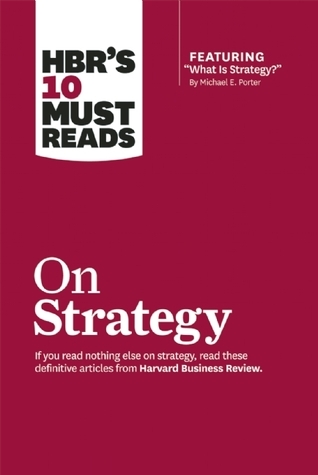More on this book
Community
Kindle Notes & Highlights
Read between
August 12 - December 7, 2017
Companies that are strong on execution also emphasize development.
six “leadership attributes”—namely, the ability to “chart the course,” “energize and inspire others,” “demonstrate ethics, integrity, and compliance,” “deliver results,” “raise the bar,” and “innovate resourcefully.” 3M’s leadership agreed that these six attributes were essential for the company to become skilled at execution and known for accountability.
Never mind what industry you’re in, how big and well known your company may be, or how clever your strategy is. If you can’t make the right decisions quickly and effectively, and execute those decisions consistently, your business will lose ground.
Even in companies respected for their decisiveness, however, there can be ambiguity over who is accountable for which decisions. As a result, the entire decision-making process can stall, usually at one of four bottlenecks: global versus local, center versus business unit, function versus function, and inside versus outside partners.
Decisions about brand building and product development frequently get snared here, when companies wrestle over how much authority local businesses should have
tends to afflict parent companies and their subsidiaries. Business units are on the front line, close to the customer; the center sees the big picture, sets broad goals, and keeps the organization focused on winning.
Function versus function decision making is perhaps the most common bottleneck. Every manufacturer, for instance, faces a balancing act between product development and marketing during the design of a new product.
In such arrangements, companies need to be absolutely clear about which decisions can be owned by the external partner (usually those about the execution of strategy) and which must continue to be made internally (decisions about the strategy itself).
Every success, every mishap, every opportunity seized or missed stems from a decision someone made—or failed to make. Yet in many firms, decisions routinely stall inside the organization—hurting the entire company’s performance.
How to clarify decision accountability? Assign clear roles for the decisions that most affect your firm’s performance—such
Good decision makers recognize which decisions really matter to performance. They think through who should recommend a particular path, who needs to agree, who should have input, who has ultimate responsibility for making the decision, and who is accountable for follow-through.
If two or more people think they’re in charge of a particular decision, a tug-of-war results.
If many people must agree, you probably haven’t pushed decisions down far enough in your organization.
When many people give input, at least some of them aren’t making meaningful contributions.
For decision making to function smoothly, only a few people should have such veto power.
A more practical objective is to get everyone involved to buy in to the decision.
the person with the D needs good business judgment, a grasp of the relevant trade-offs, a bias for action, and a keen awareness of the organization that will execute the decision.
Very often, a good decision executed quickly beats a brilliant decision implemented slowly or poorly.
If decision-making authority tilts too far toward global executives, local customers’ preferences can easily be overlooked, undermining the efficiency and agility of local operations. But with too much local authority, a company is likely to miss out on crucial economies of scale or opportunities with global clients.
To strike the right balance, a company must recognize its most important sources of value and make sure that decision roles line up with them.
GOOD DECISION MAKING DEPENDS on assigning clear and specific roles.
key is to be clear who has input, who gets to decide, and who gets it done.
recommenders consult with the people who provide input, not just hearing and incorporating their views but also building buy in along the way.
Broughton didn’t make the common mistake of seeking consensus, which is often an obstacle to action. Instead, he made it clear that the objective was not deciding whether to change the decision-making process but achieving buy in about how to do so as effectively as possible.
When his successor began seeking consensus on important issues, the team was suddenly unsure of its role, and many decisions stalled. It’s a common scenario, yet most management teams and boards of directors don’t specify how decision-making authority should change as the company does.
Indeed, cross-functional collaboration has become an axiom of business, essential for arriving at the best answers for the company and its customers.
element of scale is one reason why cross-functional bottlenecks are not easy to unclog. Different functions have different incentives and goals, which are often in conflict.
Here, as elsewhere, someone needs to think objectively about where value is created and assign decision roles accordingly. Eliminating cross-functional bottlenecks actually has less to do with shifting decision-making responsibilities between departments and more to do with ensuring that the people with relevant information are allowed to share it.
The decisions that are crucial to building value in the business are the ones that matter most.
Good decision making doesn’t end with a decision; it ends with implementation. The objective shouldn’t be consensus, which often becomes an obstacle to action, but buy in.
The best decision makers create an environment where people can come together quickly and efficiently to make the most important decisions.
The company broke down the design and manufacturing process into five steps and analyzed how decisions were made at each step.
If managers suddenly realize that they’re spending less time sitting through meetings wondering why they are there, that’s an early signal that companies have become better at making decisions.
The most successful companies use simple tools that help them recognize potential bottlenecks and think through decision roles and responsibilities with each change in the business environment. That’s difficult to do—and even more difficult for competitors to copy.


